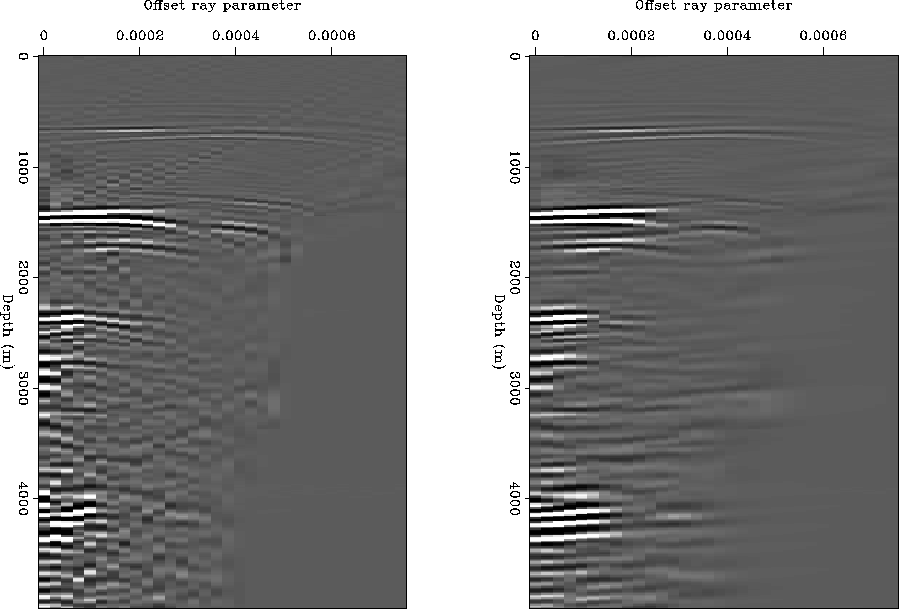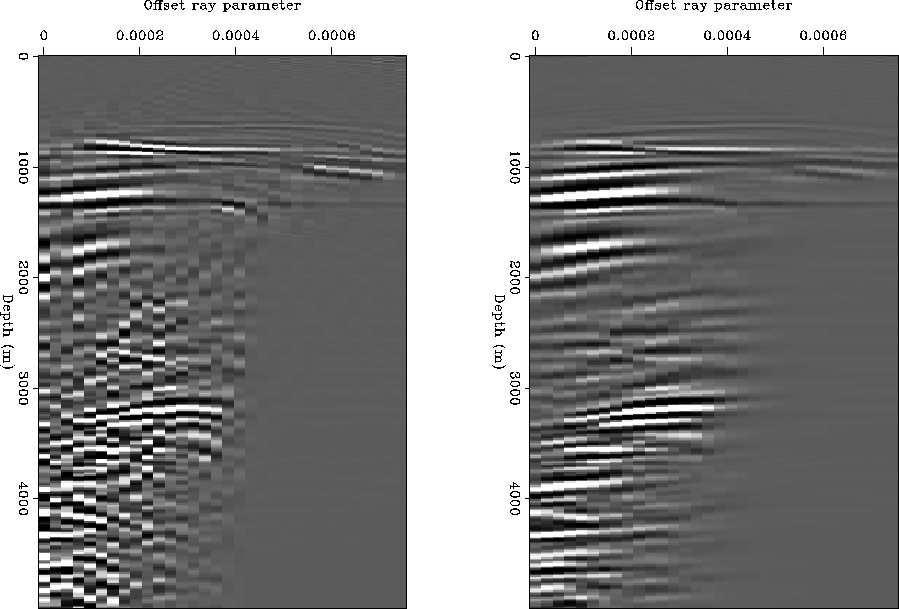 |
Figure 4 Velocity model of the Elf North Sea dataset.
The first dataset we applied this RAD preconditioned inversion to was an Elf North Sea dataset. It is a 2-D synthetic created based on a real 3-D survey. Its velocity model can be seen in Figure 4. This dataset is known to have illumination problems under the edge of the salt Prucha et al. (1998). We first created CIGs by just RAD migration, then we created CIGs by preconditioned inversion. The inversion results are from just one iteration.
Figure 5 shows a comparison of the results from a CMP location that is in a simple area of the subsurface. Note that the inversion result is cleaner, smoother, and more continuous than the migrated result. A good example is the event at 4400 meters, which has been cleaned up and now covers almost twice as many reflection angles as it did in the migrated result while still being reasonable.
Figure 6 displays the CIGs for a CMP at the edge of the salt. Once again the inversion result is better than the migrated result, and even the event for the poorly illuminated reflector at depth 4400 meters is more continuous.
 |
 |
 |